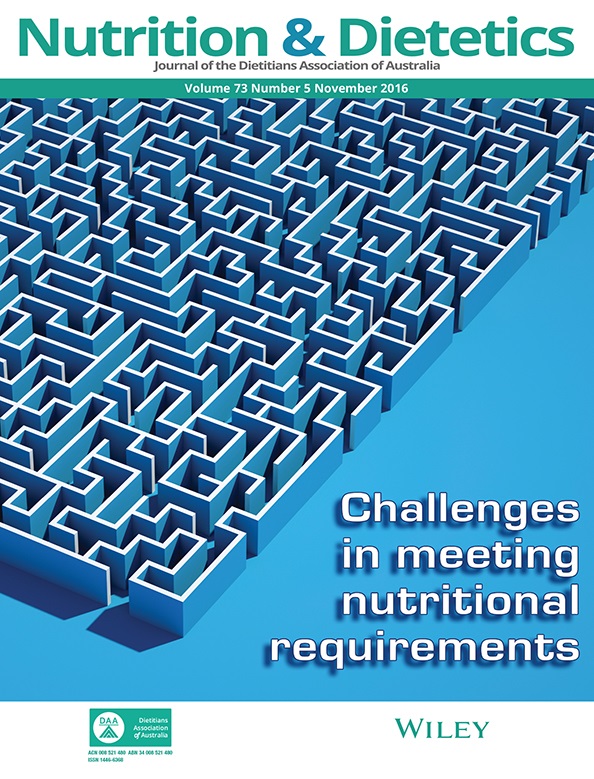Estimated portion size versus actual intake of eight commonly consumed foods by healthy adults
Abstract
Aim
This study aimed to examine the accuracy of the estimated portion size (EPS) of foods required to reach satiation, and how food characteristics influence food portion estimation in healthy adults.
Methods
This was a randomised, cross-over feeding trial with eight test sessions. The visual, olfactory and rheological characteristics of common foods were manipulated. Participants determined the portion sizes of eight test foods that need to be consumed to reach satiation, which were then compared with the actual intake (AI) of the same foods. During each session, participants also rated their appetite before and after food consumption, as well as the palatability and acceptability of the test foods.
Results
Thirty-five healthy young adults completed the study. The EPSs were not significantly different from AI of test foods, although there was a tendency to overestimate the amount required to reach satiation. AI of test foods correlated with energy density but not food palatability or acceptance. Hunger and desire-to-eat reduced, and fullness increased significantly after test food ingestion. Significant differences were found in hunger (P = 0.041) and desire-to-eat (P = 0.007) suppression between test foods. Apple juice suppressed desire-to-eat less than solid apple, albeit ingestion of these foods were isoenergetic. Food forms were used to guide portion selection of apple and apple juice.
Conclusion
Although the mean predicted portion was not different from AI, individual discrepancies were large, and a tendency to over-portion foods may pose a challenge in body weight maintenance.




